After 10 hours, we arrived at 7:00am in a small town called Urgup. A minibus waited our arrival to take us 10 km west to a small village called Ortahisar where we were to spend a night in a cave hotel!! We stayed at Hisarevi Cave House in a spectacular setting where the view across from our cave room was of the amazing Ortahisar Castle looming above the rest of the village below where homes were carved out of the rocks. Chris and I were tired but excited at the same time as staying in a cave was a first time experience for us. We weren’t sure what to expect but were thrilled to find that our cave contained a sitting area, a large and clean bathroom (actual water pressure from the shower head which was missing throughout SE Asia) and an even larger bedroom. We explored our new home for the night and couldn’t help but feel somewhat like Fred and Wilma from the Flintstones.

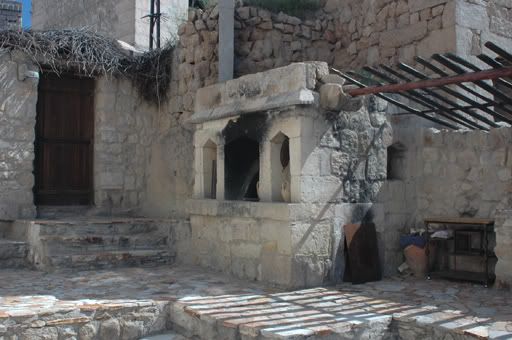

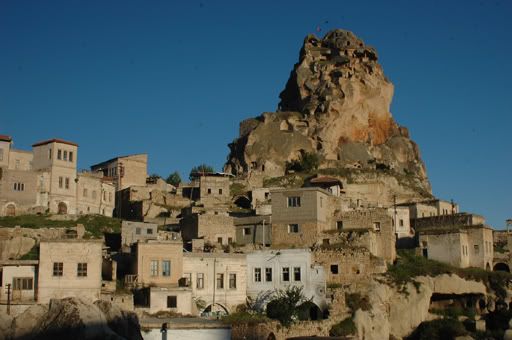
After freshening up, we started day one of our two day tour that would explore the Northern regions of Cappadocia. To our surprise, there were no horses that could be seen as the meaning of Cappadocia suggests, but instead, there exists remarkable naturally found conical rock formations (called fairy chimneys) of various shapes and sizes that can be seen as far as the eye can see. Unlike any other landscape we had seen thus far, human interventions are evident as seen by the caves, chapels and homes that are carved into these rocks.

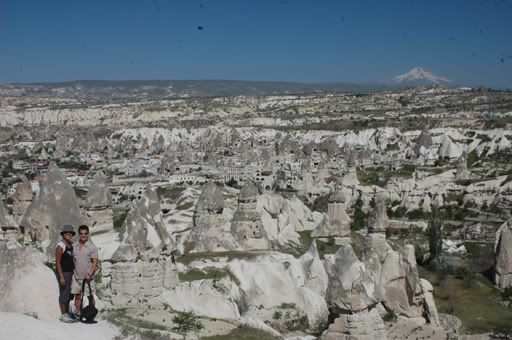
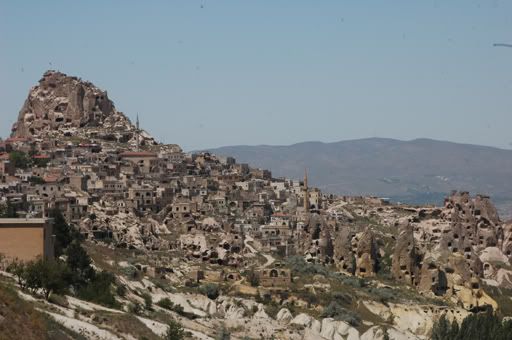

Our first stop on our tour was to Devrent, an area of rock formations known for their varying colors (from brown, yellow to red) and shapes (camel and Napoleon’s head). Here our tour guide explained how these natural wonders were formed from the eruption of Mt. Erciyes some 30 million years ago. The ash from the eruption solidified into an easily eroded material called tuff which weathered over time by water, wind and changes in temperature, resulting in the present day landscape formations.

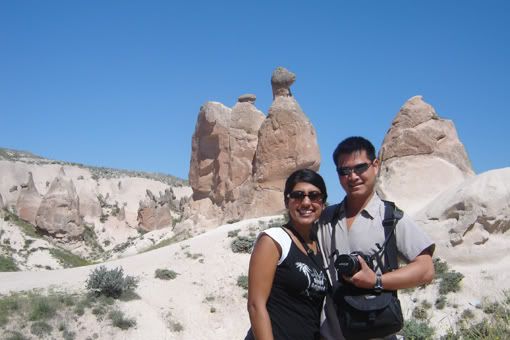
Our next stop was the Zelve Valley where evidence of the phenomenal natural rock formations were most apparent.
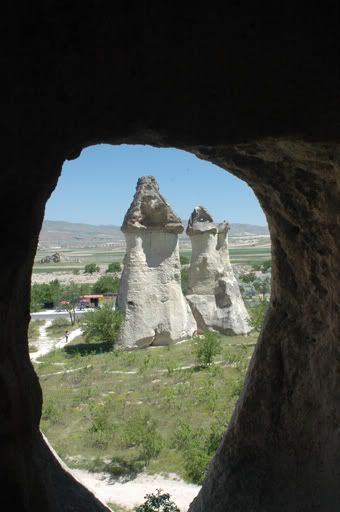


After a tasty lunch which was included as a part of the tour ($45 US per tour per person), we made our way to Avanos, where pottery and ceramics were the main attraction. We visited a family run pottery plant where they explained the process and different types of potteries and ceramics. Some traditional techniques dating back 4,000 years are still in use today such as the kick wheel technique which I had an opportunity to try. It’s definitely not as easy as it looks but my end result didn’t look half bad.

After taking a look at the various potteries and ceramics that could be bought, we made our way to Uchisar where a 95 meter tall volcanic rock was turned into a castle. This is the highest point in Cappadocia and unfortunately our tour guide advised us we could not climb the castle to the top as it was dangerous but after reading the Lonely Planet, it appears tourists are allowed to make their way up for a panoramic view of Cappadocia for a small price.

Our last stop on the tour was one of Turkey’s world heritage sites, the Goreme Open-Air Museum which holds the greatest concentration of rock cut chapels and monasteries in Cappadocia. Dating largely from the 9th century onwards, the Christians who made their way from Europe to freely practice Christianity built the valley’s 30 or more churches by cutting rooms out of soft volcanic tuff. Within some of these churches are exquisite frescoes depicting scenes from the Old and New Testaments and particularly the life of Christ and the deeds of the Saints.

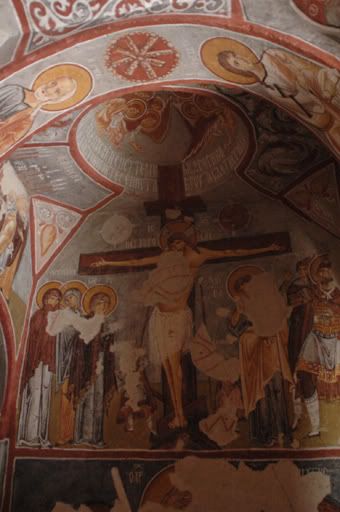
After a very long and hot day, we returned to our cool cave room to relax for a bit before deciding to venture out and explore the village around us along with climbing the castle that loomed ahead of us. We made our way through this tiny village, up and down and around cobble streets and dirt pathways until we reached the base of the rock castle. Looking up at it from the base made us realize how high the castle really was. We started our ascent up staircases and mini ladders, stopping here and there to stare out of some of the windows that had been carved out of the rock. Upon reaching the top, the view from the top was amazing. We had a beautiful panoramic view of the surrounding villages and rock formations just as the sun was setting, a very picturesque moment which we took full advantage of.



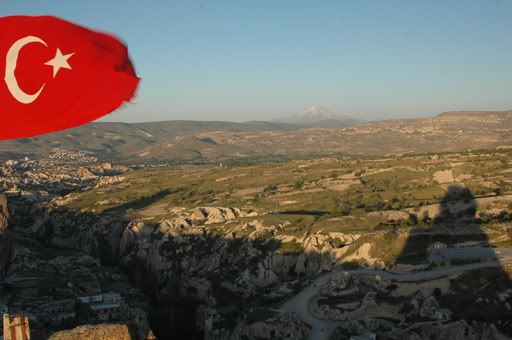
After admiring the view and taking it all in, we decided to descend the castle and found ourselves at the base of the rock at a mini café/restaurant where we decided to have some dinner. The place was all to ourselves as we sat outside enjoying the view, the food and a fantastic bottle of the local white wine. Half way through dinner, the electricity went out and we were in complete darkness. When we say the electricity went out, we don’t mean just in the restaurant but the entire village was out. We were a little nervous as to how we would find our way back to the hotel through the dark dirt streets but put that worry aside as we enjoyed the rest of our dinner by candlelight. After a great meal, we made the trek back to the hotel and did end up venturing down a few wrong paths until a local man who spoke no English was able to lead us in the right direction to our hotel. Thank goodness for remembering the name of the hotel!! We finally made it home and had a true cave experience as we tried to rummage through our bags in the dark to find our flashlight (B – we owe you one for the non battery run flashlight, it saved us this night). We went to sleep looking forward to exploring the southern regions of Cappadocia on day two of our tour.
We started our next day bright and early with a walk through the Kizilcukur Red Valley. The 4 km hike allowed us to weave in and out of these rock formations getting a closer view. Along the way we came across many pigeon houses embedded in the rocks which were carved by the locals centuries ago. These houses were of great importance to the locals as they allowed the pigeons to nest here and lay eggs. These eggs were a valuable commodity as they were used not only as food but the egg shells were used to create the frescoe paintings seen in many churches and chapels in the surrounding areas. The walk ended in Cavusin, a nearby village where we had some time to explore some caves before heading to the underground city of Kaymakli.
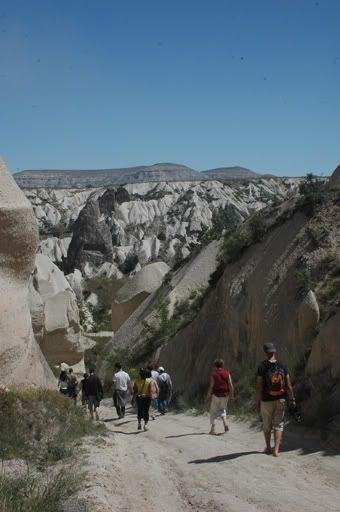

There are believed to be around 36 underground cities in the region of Cappadocia but only a handful have been found and excavated. We were lucky enough to venture into one of the more popular ones, Kaymakli. This underground city was used by the locals as a safe haven for defense against invasions. Kaymakli today is 40 metres deep and 4 levels and there is thought to have been around 5,000 people who lived underground here. We walked through the various levels discovering such things as kitchens, storage areas for food, wine cellars, water holes and ventilation shafts that brought in fresh air. It felt like being in a maze despite the fact that there were arrows and electricity within the cave to direct you. At certain times, we had to walk through very tight and narrow passageways to get to a different level or area of the city. It was hard to believe how people could have lived under these conditions for such long periods of time.
At the end of the tour, we were to board another overnight bus to our next destination of Antalya despite the fact that we weren’t quite ready to leave this magical place.
No comments:
Post a Comment